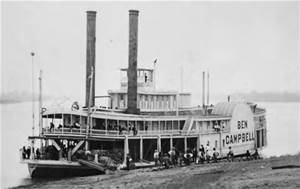Town of Canandaigua Fun Facts and Tales & Lore
Fun Facts
The amount of money expended for schools in the year 1866-87 was $8,754.83. The amount of public money apportioned was $2,088.24. The value of school property was $14,800, and the average daily attendance was 540 students.
First Town meeting was held in April 1791. First items of legislation voted were, "That swine, two months old and upward, shall have good and sufficient yokes..." and, "...that for every full grown wolf killed in town, a bounty of thirty shillings shall be paid." (Gazetteer & Business Directory 1867-8: 40).
The location of the current Town Hall, built in 1996 on NYS Route 5 & 20, was the former site of William C. Pierce's gas station. A picture of the gas station is displayed by the Receptionist's counter at the Town Hall.
Some town businesses that were in operation in the year 1876 included Agricultural Implements, Bakers & Confectioners, Booksellers, Boots & Shoes, Coopers, Clothiers & Merchant Tailors, Crockery & Glassware, Druggists, Dry Goods, Furniture, Grocers, Hardware, Hats & Caps, Watchmakers & Jewelers, Lumber Dealers, Meat Markets, Tobacco & Cigars, Undertakers and a Stove Dealer.
Tales & Lore
The Legend of Bare Hill
Long ago the Creator caused the earth to open and out of the side of a great hill near a long and lovely lake the ancestors of the Seneca Nation came into being. For a time they lived in peace. Then a boy found a little snake in the woods. It was an unusual reptile in that it had two heads. The boy took it home, made a pet of it and fed the choicest meat into its twin mouths. The serpent grew to prodigious size and its appetite grew with it. Soon its young master could not find enough game to satisfy its hunger. The People of the Great Hill came to fear it as a monster. Finally the great snake in his desperate hunger encircled the hill and barred the gates with its opened jaws so that no one could escape. The people grew hungry and tried to get away. One by one the monster ate them. At last only a young warrior and his sister remained of all the People of the Hill. One night the youth had a vision. If he would fletch his arrows with his sister's hair, they would possess a fatal charm over the monster. He followed his dream and shot his magic arrows straight into the great red jaws of the enemy of his people. The reptile was mortally wounded and in his death agony he writhed his way down the hill, tearing down trees and flailing the earth until he finally slid into the lake and was seen no more. As the great snake rolled down the hill, he disgorged the skulls of the Senecas he had devoured. In the area have been found rounded stones divided into geometric patterns and weirdly resembling human skulls. And to this day nothing has ever grown in the path torn by the serpent writhing down that hillside (Merrill: 69-70).
Senecas Had a Sense of Humor
According to common lore, the early European settlers recount a story when the local natives served hominy to the white guests, only one spoon was used. The host would take the spoon, and after wiping it on the sole of his moccasin, pass the spoon onto the guests. The joke was meant to shock the white visitor, for most Indians had their own cup and spoon and thier own homes were spick and span (Merrill: 39).
 The Steamboats
The Steamboats
It has been many years since steamboat whistles have echoed over Canandaigua's waters. The Ogarita, Oriana and the Onnalinda are gone along with the 60 docks that once dotted the 32 miles of lake line. The docks where the steamboats picked up grapes from Vine Valley, apples from Woodville, and other produce until the holds bulged. While above the decks, bands played and passengers danced and sang in those excursion days of long ago (Merrill: 54).
Pictures and a short description of several of the old steamboats are on display throughout the Town Hall conference rooms, each of which is named for a former Canandaigua Lake steamboat.
